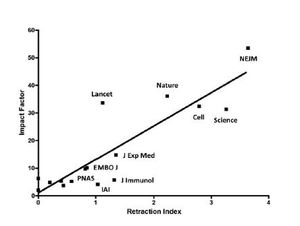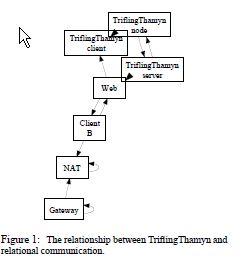 After the editors of Infection and Immunity retracted six articles in one year, they got to thinking about the frequency of retractions.
After the editors of Infection and Immunity retracted six articles in one year, they got to thinking about the frequency of retractions.
They took a sampling of 17 journals with a range of impact factors and then created an index for each one that measured the number of retracted articles from 2001-2010 as a proportion of total articles published.
Their findings show that the higher the impact factor of the journal, the greater the frequency of retractions. They speculate that the rewards of publishing in prestigious venues may motivate researchers to engage in scientific misconduct.
Others who have looked at the data remind us that the number of retractions in all journals is vanishingly small. While it’s important to enforce ethical research practices, we may be overstating the impact of retracted papers.
